What China has got over a decade on its iconic coordinated regional development strategy?
* Monday will mark the 10th anniversary of the beginning of coordinated development in the Beijing-Tianjin-Hebei region.
* Since coordinated development was proposed as a national strategy in 2014, the region has made remarkable breakthroughs in high-quality development, offering Chinese wisdom on the future of mega-urban governance to the world.
* As the benefits of the regional integration gradually emerge, China's endeavors have provided fresh ideas for global megacity clusters facing the increasingly significant challenge of pursuing equitable and sustainable development.
BEIJING -- Monday will mark the 10th anniversary of the beginning of coordinated development in the Beijing-Tianjin-Hebei region.
Since coordinated development was proposed as a national strategy in 2014, the region has made remarkable breakthroughs in high-quality development, offering Chinese wisdom on the future of mega-urban governance to the world.
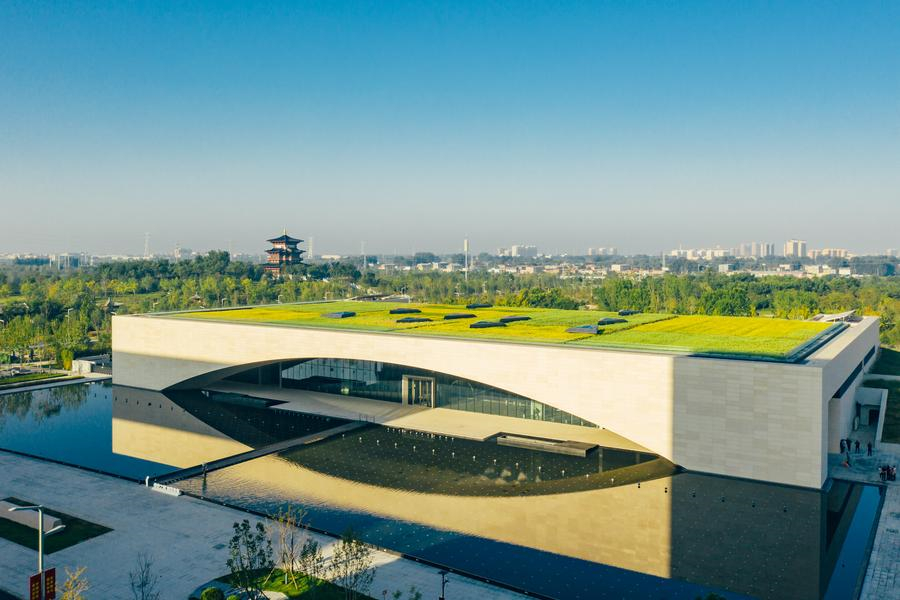
An aerial drone photo taken on Sept. 21, 2023 shows the Xiong'an Urban Computing Center in Xiong'an New Area, north China's Hebei Province. [Xinhua/Zhang Cheng]
OPTIMIZED INDUSTRIAL LAYOUT
In 2014, Beijing faced urban challenges such as unbalanced, inadequate and uncoordinated development. These issues also affected the broader Beijing-Tianjin-Hebei region, as the three locations -- also known as "Jing-Jin-Ji" -- had varying development levels despite being neighbors, and resources were highly concentrated in the capital city.
Early in 2014, China initiated a key strategy of coordinating the region's development to create a development model with an improved economic structure, a cleaner environment and improved public services.
Ma Qinghai, general manager of SMC Investment Management China Co., Ltd., a subsidiary of Japan's pneumatic component manufacturer SMC Corporation, said that this year's Spring Festival was full of anticipation and excitement.
"We're preparing for the groundbreaking of the much-anticipated second phase of our Tianjin plant," Ma said.
SMC is a beneficiary of the Beijing-Tianjin-Hebei region's coordinated development. Exactly three decades ago, the company chose to settle in the Beijing Economic-Technological Development Area, bullish about China's enormous market potential. In 2018, SMC established a subcompany in Tianjin to aid its expansion layout.
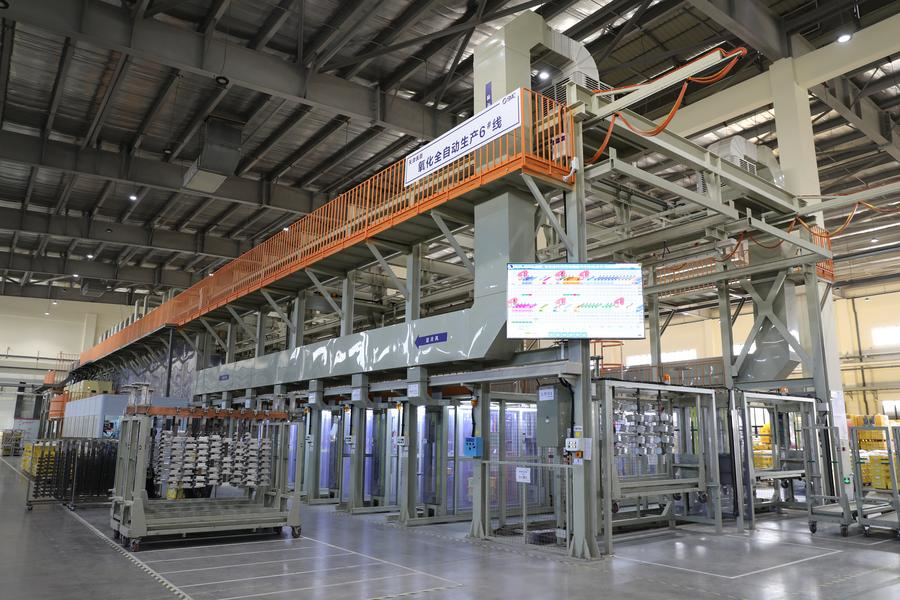
This photo taken on March 1, 2023 shows the automatic production line of SMC (China) Co., Ltd., a subsidiary of Japan's pneumatic component manufacturer SMC Corporation, in north China's Tianjin Municipality. [Xinhua]
Three years after the Tianjin plant began operation, the company's local output value has already exceeded 1 billion yuan (138.93 million U.S. dollars). SMC has even established a market team tailored to the Beijing-Tianjin-Hebei region and is considering investing a further 500 million yuan to build an innovation center in Beijing serving the whole Asia-Pacific region.
And SMC's story is not unique. To relieve Beijing of functions non-essential to its role as the capital, many enterprises in Beijing have extended their core industrial chains to Tianjin and Hebei, optimizing the layouts of supply chains and expanding the market.
In 2018, entrepreneur Hu Jianlong moved his agricultural artificial intelligence company from Beijing to Tianjin. And over the past five years, the company's annual order volume has increased from 1 million yuan to 50 million yuan.
"We have policies on par with what companies enjoy in Beijing's Zhongguancun, yet we have lower costs," Hu said.
In the process of relocating its non-essential functions, Beijing has shut down over 3,000 manufacturing companies and closed or upgraded nearly 1,000 markets and logistics centers over the past decade, Liu Bozheng, deputy director of the Beijing office overseeing the integration of the Beijing-Tianjin-Hebei region, said at a press briefing Thursday.
Indicating high-quality growth, the proportion of Beijing's new business entities in high-end industries covering technology, commerce, culture and information among all had risen to 66.1 percent in 2023 from 40.7 percent in 2013.
With a more rational industrial layout, the Beijing-Tianjin-Hebei region saw its gross domestic product grow 90 percent from 2013 to hit 10.4 trillion yuan in 2023, official data shows.
Ma noted that over the past decade or so, the Chinese market has contributed half of SMC's global growth.
"We will continue to expand our layout and seize the opportunities and momentum of the Beijing-Tianjin-Hebei coordinated development strategy to take our performance to new heights," Ma said.
VISION FOR THE FUTURE
The most important feature of the coordinated development strategy is that it takes the whole region into consideration, noted Shi Xiaodong, chairman of the Beijing Municipal Institute of City Planning and Design.
An Italian business district next to the high-speed railway station in Wuqing, a suburban district of Tianjin, has witnessed how the collaborative efforts have transformed the region.
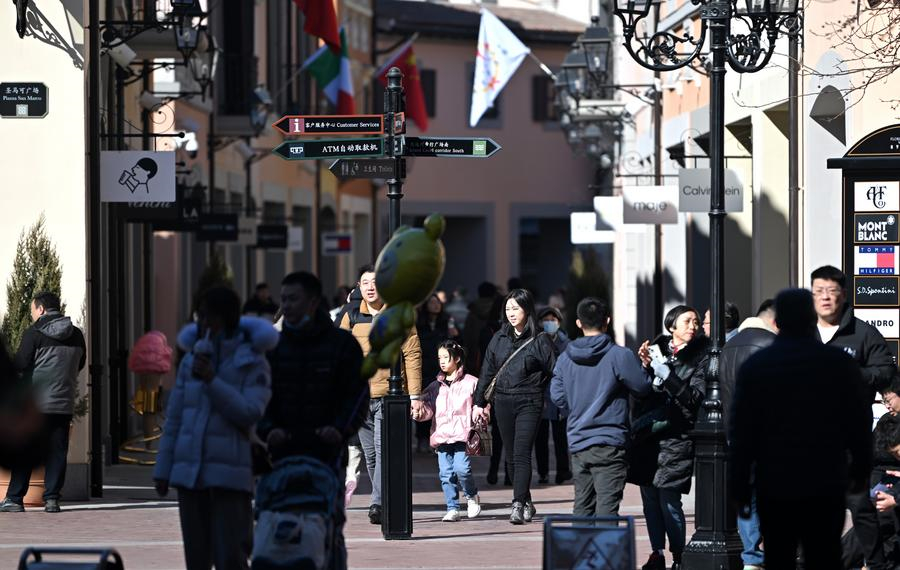
People visit an Italian business district next to the high-speed railway station in Wuqing, a suburban district of Tianjin, Feb. 15, 2024. [Xinhua/Li Ran]
Wuqing station began operations in 2008 when it handled just 12 train journeys each day, said Guo Junli, a local official in charge of promoting the development of the business district.
"When the Italian business district opened in 2011, the number of trains the station handled every day grew to 22, and then to 46. Today, all weekend intercity trains traveling between Beijing and Tianjin stop at Wuqing, bringing an average of over 16,000 passengers from Beijing to Wuqing every weekend," Guo said. "Wuqing station has already been expanded once and is about to be upgraded again, given the ever-growing flow of traffic."
"The market grew fast with the gradual deepening of regional integration. We welcomed more than 12 million visitors in 2023, with more than 70 percent coming from Beijing or Hebei," said Howard H. Li, board chairman and CEO of Waitex Group, one of the main investors in the business district.
The Beijing-Tianjin-Hebei region now has over 11,000 kilometers of railways, up more than 30 percent from 2013, and nearly 11,000 kilometers of highways, up over 40 percent from 2013, bringing convenience to more than 100 million people living in the region's 13 cities at the prefecture level and above, all of which are included in the coordinated development strategy.
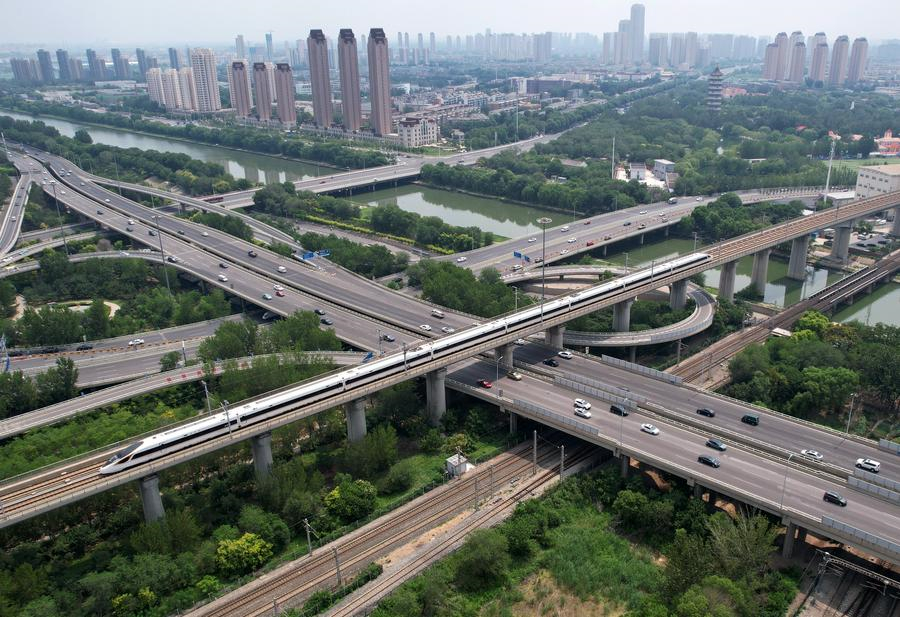
An aerial drone photo taken on July 20, 2023 shows a train running along the Beijing-Tianjin Intercity Railway in the urban area of north China's Tianjin. [Xinhua/Zhang Chenlin]
As the regional integration deepens, residents are being presented with a futuristic vision of urban life.
The once heavy smog in the region is almost a distant memory, and Xiong'an, the country's "city of the future," is being built at a rapid pace.
On April 1, 2017, China announced plans to establish the Xiong'an New Area about 100 kilometers southwest of Beijing, aiming to build the 1,770-square-kilometer area into a green, innovative city and a national model of high-quality development. Chinese urban planners envision that by the middle of the century, Xiong'an will be a significant part of the Jing-Jin-Ji cluster.
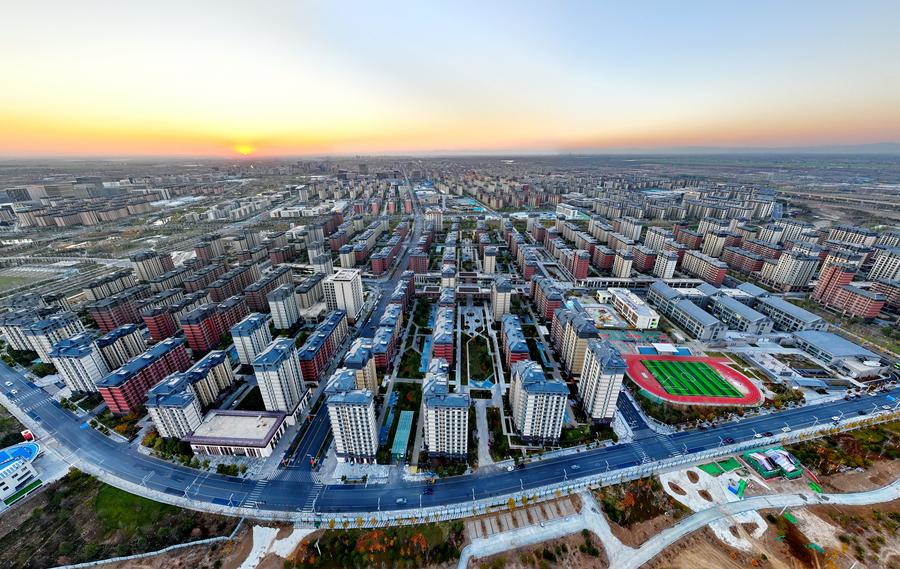
An aerial drone photo taken on Nov. 23, 2023 shows the Rongdong area of Xiong'an New Area, north China's Hebei Province. [Xinhua/Mu Yu]
In less than seven years, Xiong'an has been transformed from a blueprint into reality, with over 3,000 buildings rising from the previously barren lowlands and shabby villages. Furthermore, the centrally-administered state-owned enterprises have set up more than 200 subsidiaries and various branches in the area.
"By giving full play to China's institutional advantages and combining effective government with an efficient market, the three locations are exploring possible ways to tackle the world's urban development bottlenecks, and the progress achieved is striking," said Liu Binglian, a professor at Nankai University's College of Beijing-Tianjin-Hebei Collaborative Development.
As the benefits of the regional integration gradually emerge, China's endeavors have provided fresh ideas for global megacity clusters facing the increasingly significant challenge of pursuing equitable and sustainable development.
"Strengthened coordination across local administrative boundaries within cluster territories brings with it an array of social, economic, and sustainability benefits -- including productivity gains from expanded agglomeration economies and efficiency gains that support the national objective of increasing domestic consumption to fuel future economic growth -- lessons other countries may do well to learn from," read an article authored by Stephen P. Groff, former vice-president at the Asian Development Bank, and Stefan Rau, a senior urban development specialist at the same bank.
Video reporters: Ma Yujie, Li Shuai, Hao Jie; Video editors: Yu Jiaming, Luo Hui, Zhang Nan
























